Law & Politics
We Profile 3 Famous Billionaire Drug Kingpins and the Art They Adored
Botero was dismayed to learn his works were seized in a raid of Escobar's home.
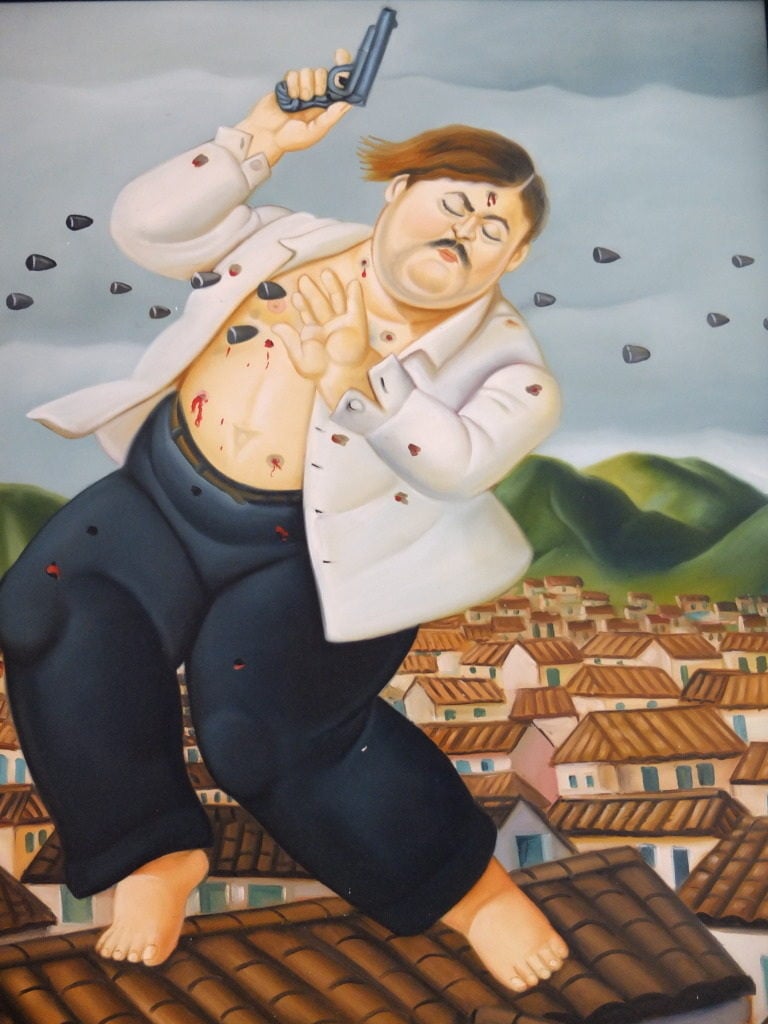
Botero was dismayed to learn his works were seized in a raid of Escobar's home.

Eileen Kinsella

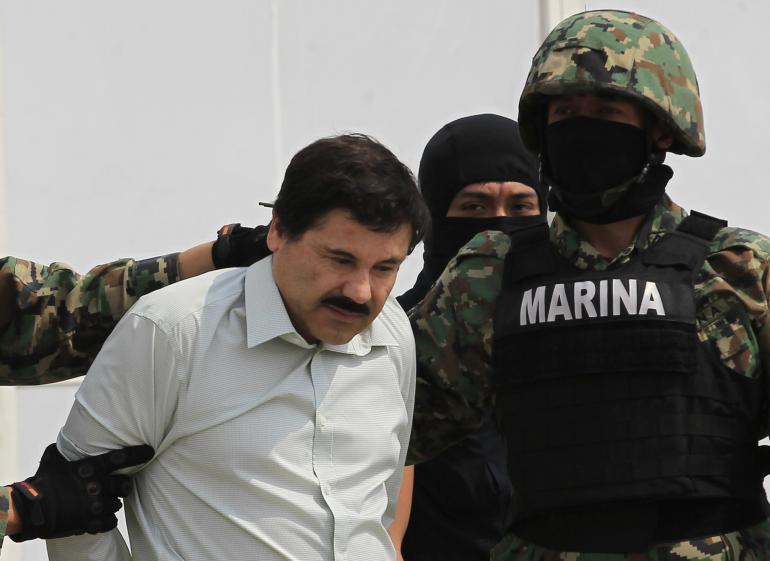
Mexican druglord Joaquin Guzmán Loera, aka El Chapo, escaped from prison on July 11.
Photo: via The Fix.
In the wake of the daring prison escape pulled off on July 11 by notorious Mexican drug lord Joaquin Guzmán, aka “El Chapo” (shorty), artnet News looked into how big a role art has played in his illicit activities and money laundering.
In addition to an extensive collection of guns, exotic animals, and hordes of cash stashed in closets and walls that were found by authorities at his Mexican villa in 2014, the Sinaloa Cartel kingpin’s taste for art—questionable as that may be—was also on display. Authorities also found “a gaudy oil painting of a bucking bull, stuck full of swords but still defiant, [hanging] on one wall,” according to a report in the New Yorker.
Of course, the connection between drug traffickers and potentially valuable artworks is nothing new. The appeal of a lucrative, yet easily movable, asset is an obvious choice for money laundering or black market trading. It was a telling sign that Mexico’s implementation of tighter rules aimed at reining in cash transactions on high-priced goods such as jewelry, yachts, and artwork was recently said to have been a major factor in the chilling of the Mexican art market.
We were curious to see how frequently drug traffickers turned to art whether to buy it, stash it, or barter it on the black market. Read on to see what we found.

Héctor Beltrán Leyva.
Photo: via The Guardian.
Héctor Beltrán Leyva
Leyva, who, according to reports, ran a violent drug and arms empire from San Miguel de Allende, a quiet Mexican town popular with foreigners and artists, was arrested by Mexican authorities this past October as he dined at a seafood restaurant there.
Leyva posed as a businessman selling art and real estate, police said. A criminal investigator told the International Business Times that he had adopted a “moderate profile” to avoid detection. Leyva chose “an identity that allowed him to pass for a wealthy businessman dedicated to trade in real estate and artworks to justify his standard of living,” investigator Tomas Zeron told the IBT.
Though it was not specified what type of art or by which artists Leyva was trading in, reports indicate that the dealership served as a front for the so-called ABL cartel. This was named for Leyva’s late brother, Arturo, who was killed in a 2009 gun battle with security forces. According to the IBT report, ABL was formed as a splinter group of the larger Sinaloa cartel in 2008.
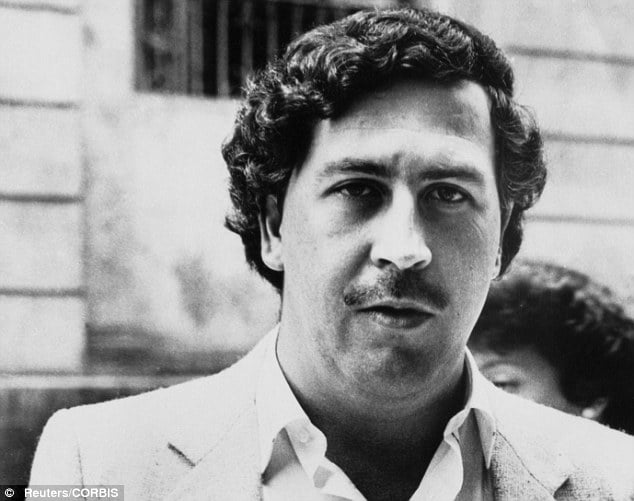
Pablo Escobar.
Photo: via The DailyMail.
Pablo Escobar
In 1989, Pablo Escobar, one of the most notorious drug lords in history, was named by Forbes magazine as the seventh wealthiest man in the world, with an estimated fortune of $25 billion. The extent of his drug empire was chronicled in a fascinating book, “Killing Pablo: The Hunt for the World’s Greatest Outlaw,” penned by investigative reporter Mark Bowden, in 2001. Escobar was connected to the murder of 30 judges and 400 police offers before he was finally shot and killed on a rooftop while attempting to evade Colombian police in 1993.
Though art was just one part of his larger cocaine empire, Escobar was known to have used works by artists such as Salvador Dalí and Pablo Picasso to launder money. And Colombian painter Fernando Botero was reportedly dismayed when he learned that his works had been seized in a raid from Escobar’s home.
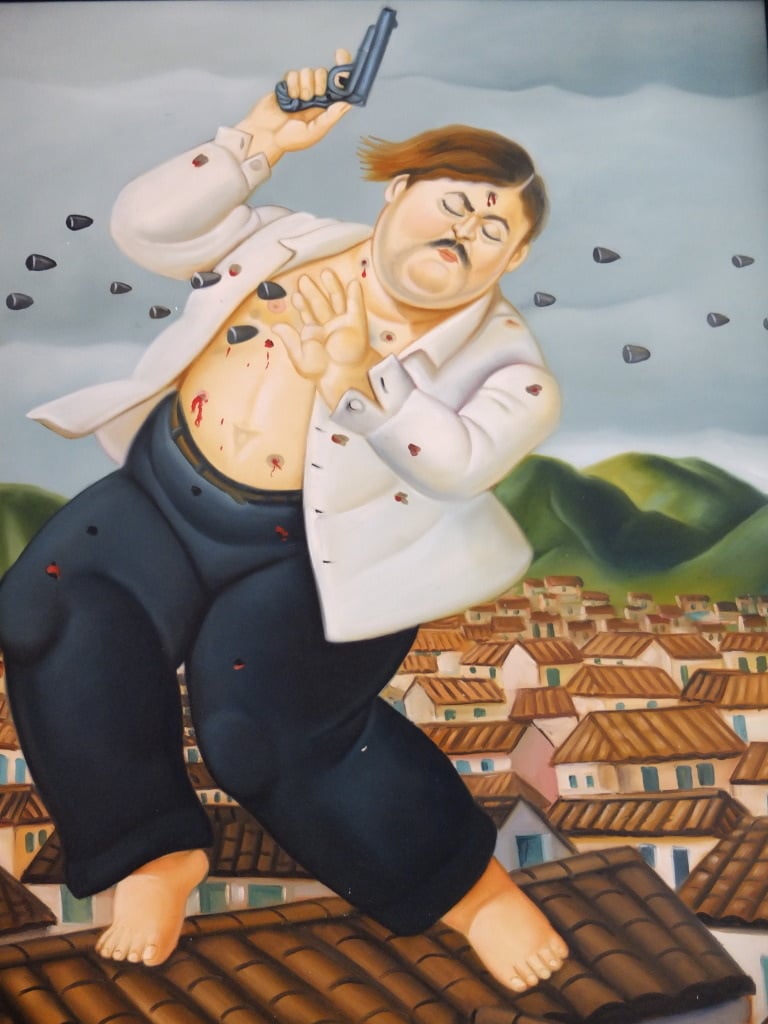
Fernando Botero, The Death of Pablo Escobar (1999).
Photo: via Pinterest.
Years later, Botero actually addressed Escobar’s death and the larger specter of drug violence in Colombia in his 1999 painting (above), The Death of Pablo Escobar, showing Escobar in the artist’s signature rotund style, being brought down in a hail of bullets on a rooftop.
In another art-world related twist, a silent auction in Bogotá in October 2013 offered more than two decades of artwork, jewelry, and other valuables seized from Colombian drug traffickers over the years. These included a solid gold Rolex encrusted with diamonds that had once been owned by Escobar himself—of course—though at $8,500 it realized just a fraction of the $70,000 estimate.
Also on the block, though not necessarily pegged as being owned by Escobar, were paintings by Colombian artists Alejandro Obregón, David Manzur and Luis Caballero. One Obregón painting fetched $77,000.
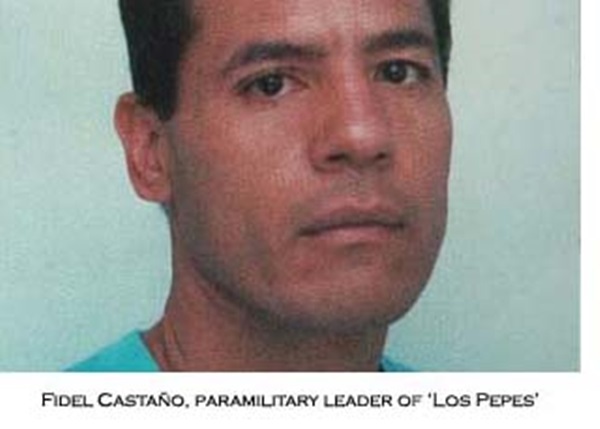
Fidel Castaño.
Photo: via NSA Archive on George Washington University website.
Fidel Castaño
Castaño was an art dealer, as well as a right-wing Colombian drug lord and paramilitary, who was one of the founders of the anti-Escobar group PEPE or Los Pepes, an acronym for “People Persecuted by Pablo Escobar.”
According to the National Security Archive of George Washington University, the group was described as “a clandestine terrorist organization that waged a bloody campaign against people and property associated with the reputed narcotics kingpin.”
Castaño reportedly owned dozens of Botero paintings and had close connections with artists including Salavador Dalí. He has been missing since 1994 and is presumed dead. But according to a 2004 report in the Miami Herald, DEA officials suspect that Fidel is working as an art dealer in Europe and Israel.